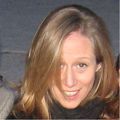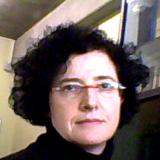Studying at the University of Verona
Here you can find information on the organisational aspects of the Programme, lecture timetables, learning activities and useful contact details for your time at the University, from enrolment to graduation.
Academic calendar
The academic calendar shows the deadlines and scheduled events that are relevant to students, teaching and technical-administrative staff of the University. Public holidays and University closures are also indicated. The academic year normally begins on 1 October each year and ends on 30 September of the following year.
Course calendar
The Academic Calendar sets out the degree programme lecture and exam timetables, as well as the relevant university closure dates..
| Period | From | To |
|---|---|---|
| 1° Semestre | Oct 1, 2023 | Jan 31, 2024 |
| 2° Semestre | Mar 1, 2024 | Jun 30, 2024 |
Exam calendar
To view all the exam sessions available, please use the Exam dashboard on ESSE3. If you forgot your login details or have problems logging in, please contact the relevant IT HelpDesk, or check the login details recovery web page.
Should you have any doubts or questions, please check the Enrollment FAQs
Academic staff
 denise.lovison@univr.it
denise.lovison@univr.it
Study Plan
The Study Plan includes all modules, teaching and learning activities that each student will need to undertake during their time at the University.
Please select your Study Plan based on your enrollment year.
1° Year
| Modules | Credits | TAF | SSD |
|---|
2° Year It will be activated in the A.Y. 2024/2025
| Modules | Credits | TAF | SSD |
|---|
3° Year It will be activated in the A.Y. 2025/2026
| Modules | Credits | TAF | SSD |
|---|
4° Year It will be activated in the A.Y. 2026/2027
| Modules | Credits | TAF | SSD |
|---|
5° Year It will be activated in the A.Y. 2027/2028
| Modules | Credits | TAF | SSD |
|---|
| Modules | Credits | TAF | SSD |
|---|
| Modules | Credits | TAF | SSD |
|---|
| Modules | Credits | TAF | SSD |
|---|
| Modules | Credits | TAF | SSD |
|---|
| Modules | Credits | TAF | SSD |
|---|
| Modules | Credits | TAF | SSD |
|---|
Legend | Type of training activity (TTA)
TAF (Type of Educational Activity) All courses and activities are classified into different types of educational activities, indicated by a letter.
Human Anatomy (2023/2024)
Teaching code
4S00130
Academic staff
Coordinator
Credits
6
Language
Italian
Scientific Disciplinary Sector (SSD)
BIO/16 - HUMAN ANATOMY
Period
2° Semestre dal Mar 1, 2024 al Jun 30, 2024.
Courses Single
Not Authorized
Learning objectives
The main aim of this course is to enable students to adequately describe the skeletal system, the muscular system, the vascular system, the integumentary, respiratory, endocrine, urinary reproductive, digestive, lymphatic, the central nervous systems and part of the peripheral nervous system (spinal nerves and autonomic nerves) using the proper terminology. The heart and the cranial nerves are also examined. The course addresses the gross anatomy and the microscopic features of these systems and provides their essential morphological-functional bases.
Prerequisites and basic notions
Basic biology knowledge
Program
Introduction to the study of human anatomy. General structure of the organism and anatomical terminology: anatomical position; surfaces and section planes; movements. Topographic anatomy: general organization of the human body. Locomotor system: General information and notes on the morphofunctional characteristics of bone tissue. Skeleton and joints: general structure of the skeleton. Types of bones. The skull, general structure: neurocranium and splanchnocranium. Description of the individual cranial bones. Spine and rib cage. Shoulder girdle and bones of the upper limb. Pelvic girdle and bones of the lower limb. Classification of joints and general description of the joint cavity with references to the more complex joints. Muscular system: general organization, morphofunctional notes on skeletal muscle tissue. Description of the muscles of the head and neck; chest muscles; abdominopelvic muscles; limb muscles. Cardio-circulatory system: general information; Heart; arteries; veins; microcirculation; pulmonary circulation; systemic circulation; arteries and veins of the general circulation; elements of fetal circulation. The blood. The lymphatic system: lymph; lymph nodes; thyme; spleen. Digestive system: general organization and characteristics of the peritoneum: the oral cavity; tongue and teeth; pharynx; esophagus; stomach; intestine; pancreas; liver; bile ducts; gallbladder. Respiratory system: external nose and nasal passages; larynx; trachea; bronchi; lungs and pleurae; respiratory mechanics and related nerve centers. Urinary system: general information; kidney; renal pelvis; ureter; bladder; male urethra and prostate; female urethra. Endocrine system: general information and topography, structure and function of the hypothalamic-pituitary control centers and the main endocrine glands. Female genital system: general information, ovary; uterine tubes; uterus; vagina; external genitalia; placenta. Male genital system: general information; testicle; spermatic ducts; external genitalia. Central nervous system: general organization. description of the spinal cord, brain stem, cerebellum, diencephalon, telencephalon. Peripheral nervous system: general organization; cranial nerves; spinal nerves; vegetative nervous system.
Bibliography
Didactic methods
the course will consist of face-to-face lectures. students will be provided with teaching material relating to the lessons carried out
Learning assessment procedures
The exam will be an oral test
Evaluation criteria
The ability to understand and memorize the subject, the specialized anatomical language, the ability to have an overall and detailed vision of the topics on the program will be evaluated.
Criteria for the composition of the final grade
Evaluation of the oral interview
Exam language
italiano
Type D and Type F activities
Modules not yet included
Career prospects
Module/Programme news
News for students
There you will find information, resources and services useful during your time at the University (Student’s exam record, your study plan on ESSE3, Distance Learning courses, university email account, office forms, administrative procedures, etc.). You can log into MyUnivr with your GIA login details: only in this way will you be able to receive notification of all the notices from your teachers and your secretariat via email and soon also via the Univr app.

 045-8027284
045-8027284








